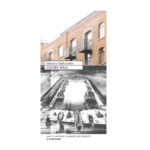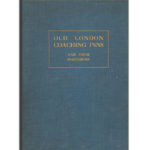Description
About 100 years after the peak of the Industrial Revolution, anniversary histories of firms and companies, marking a century of achievement began to be published. There were various types, ranging from the serious academic “warts-and-all” study, with lots of facts and figures,which may well have originated as a university thesis, to the chatty anecdotal style, probably written by one of the organisation’s own director’s or managers, and self published, which might be a bit light on facts and dates, but could be an entertaining read, (see http://www.
|
Product Description. This is one of the most remarkable company histories I have ever read. From a small local foundry and millwrights business employing 25 people in …
|
||
There was a whole range of types in between, where a free-lance author put a proposal to the organisation, and found a publisher, another type where the firm hired a writer themselves and arranged publication, and yet another, where the compny was sufficiently eminent for a publisher to submit a proposal, and find an author. In these types of course, the organisation had a veto over what was published, so they might indulge in rather irritating ego-massaging of certain directors and managers. Of course one searches in vain for the rattle of skeletons in closets.
“Three Hundred Years on London’s River” seems to belong to either the second or third category, and is unusual in two ways. First it covers 300 years (100, 50, or 75 was more usual) secondly the author reveals that when he began work, even the company was not sure if a “Hay” family had been involved, because early maps showed the premises as “Hay Wharf” suggesting a commodity, rather than a person. Hay’s Wharf company records must have been very incomplete, because the last member of the Hay family to be involved, Francis Theodore Hay wasstill in business at Rotherhithe in the 1830s, and died there in 1838. (tomb at St. Mary’s). MR. Ellis was an historian after my own heart. Reasoning that if Hay’s did not have records, other firms and people doing business with them will have some traces. So it proved, and after lengthy trawls through libraries and record offices he was not only able to produce a narrative of the Hay’s involvement back to the time of Cromwell, but a v ery creditable study of the archaeology and architecture of buildings between Tower Bridge and London.
Sadly Mr. Ellis’s work does not seem to have met with the complete approbation of the Hay’s board. There is a letter folded into my copy (which I bought in the 90’s,) from the then chairman of Hay’s to an apparently distant cousin, who introduced himself at a shareholders meeting. It was enclosed in a complimentary copy of “300 Years…” and read in part, “Sadly, it is a very badly written book, but there were a number of disputes amongst the directors at the time and notthing was done.” I disagree it is by no means badly written, in fact given the little help that he got from the firm’s records, it is rather good – but presumably not ego massaging enough!
I do hope Mr. Ellis got paid! I remember meeting the Directors of a Scottish bus company, who were thinking about commissioning a history… but no! That is another story!
PREVIEW BELOW – MAY TAKE A WHILE TO LOAD.





Reviews
There are no reviews yet.